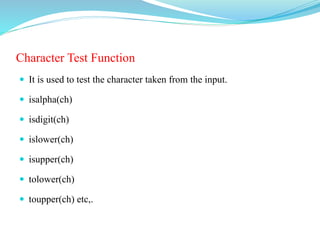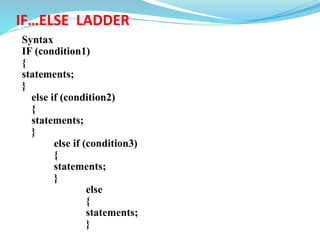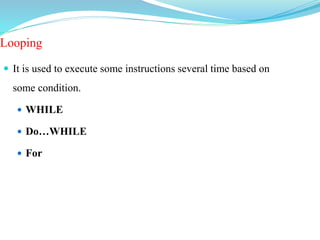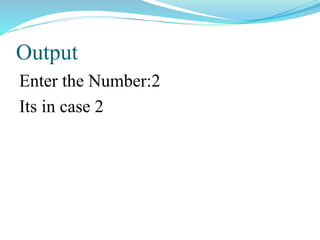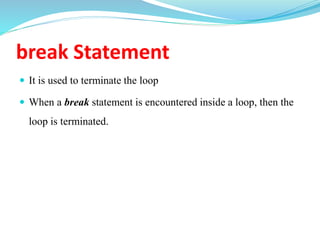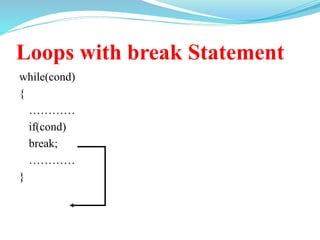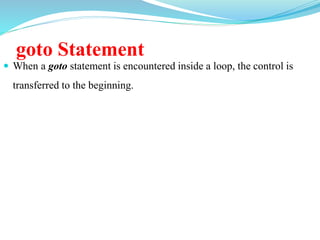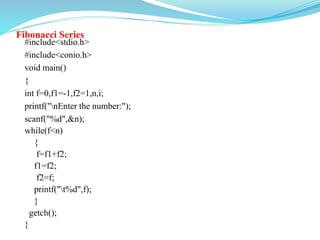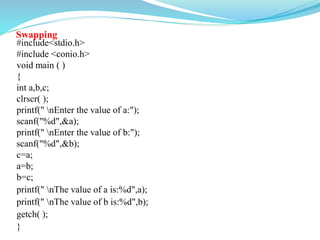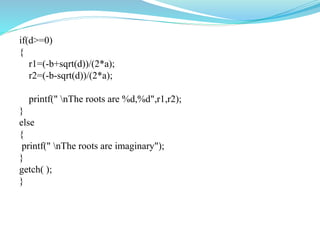This document provides an overview of C programming basics including problem formulation, problem solving, and the fundamentals of C programming. It discusses problem formulation as an iterative process involving decomposing problems into appropriate dimensions. It then covers problem solving methods and introduces C programming, describing its features, character set, tokens, variables, data types, operators, and the structure of a basic C program. It provides examples of programming concepts like input/output operations, decision making, looping, and solving simple problems in C.
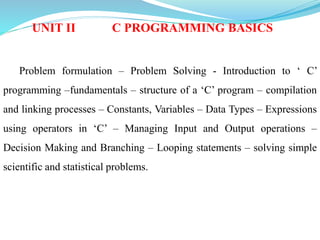

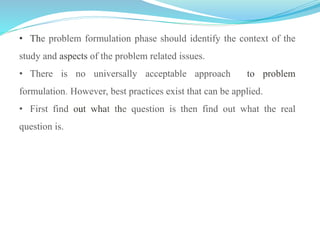
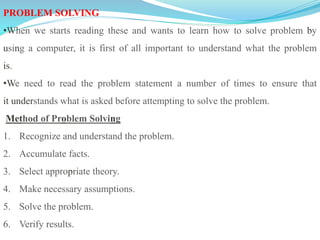



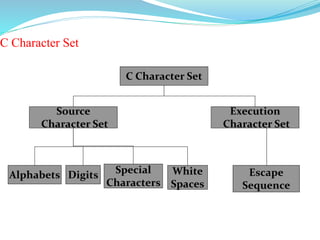
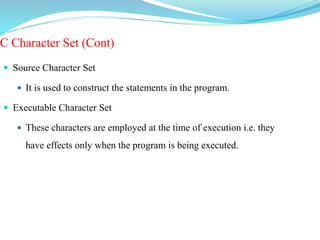
![Source Character Set
Letters a to z ,A to Z
Digits 0 to 9
Special Characters ! @ # $ % ^ & * ( ) _ - + = | { } [ ]
etc,.
White Spaces Blank Space ,Horizontal tab, New
line, Vertical tab etc,.](https://image.slidesharecdn.com/cprogrammingsession1-231203082813-83e3d547/85/c-programming-session-1-pptx-10-320.jpg)

![ Ampersand &
Caret ^
Asterisk *
Minus -
Addition +
Lesser than <
Greater than >
Parenthesis ()
Bracket []
Braces {}
Percentage %
Hash #
Equal to =
At the rate @](https://image.slidesharecdn.com/cprogrammingsession1-231203082813-83e3d547/85/c-programming-session-1-pptx-12-320.jpg)


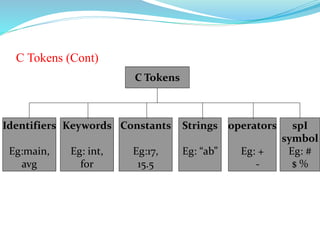



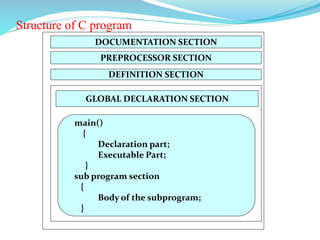

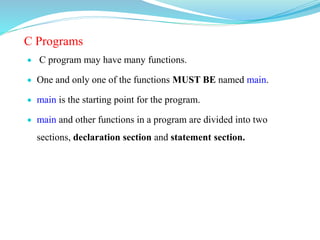

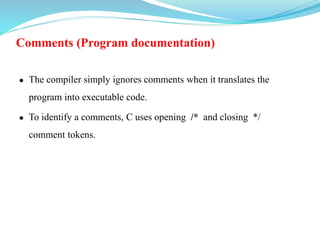





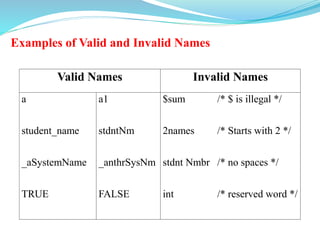




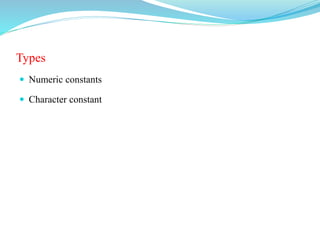



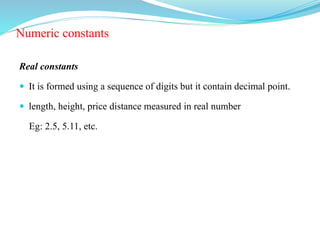

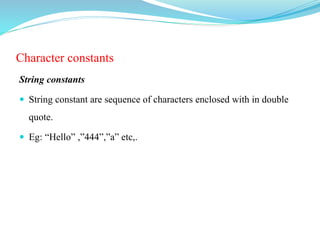




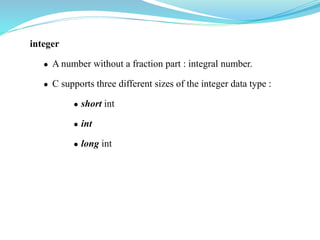
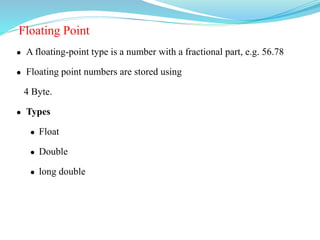

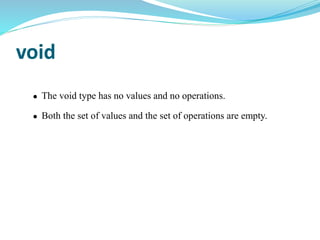








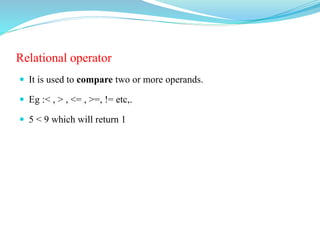







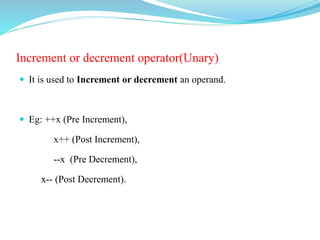















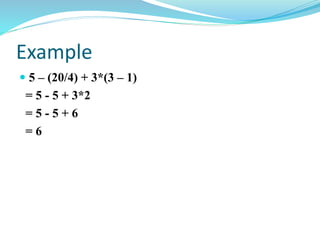











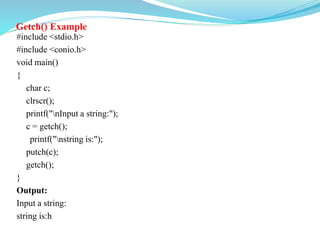
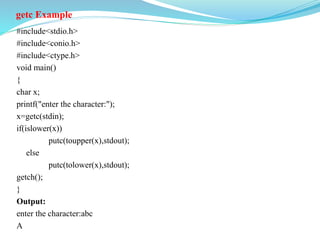
![gets() Example
#include <stdio.h>
#include<conio.h>
void main()
{
char c[80];
clrscr();
printf("Input a string:");
gets(c);
printf("The string is:");
puts(c);
getch();
}
Output:
Input a string:qwerty
The string is:qwerty](https://image.slidesharecdn.com/cprogrammingsession1-231203082813-83e3d547/85/c-programming-session-1-pptx-95-320.jpg)
